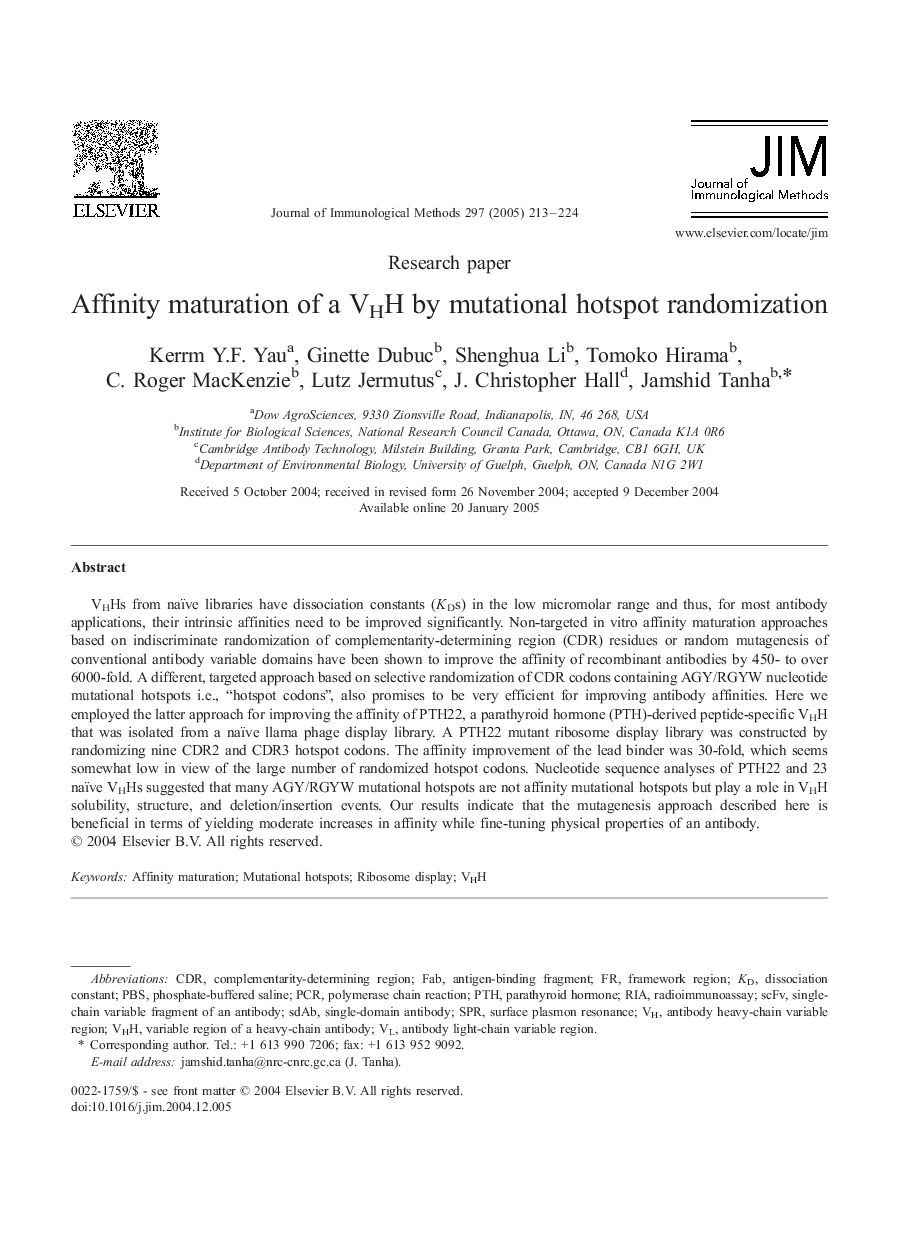| Article ID | Journal | Published Year | Pages | File Type |
|---|---|---|---|---|
| 9902384 | Journal of Immunological Methods | 2005 | 12 Pages |
Abstract
VHHs from naïve libraries have dissociation constants (KDs) in the low micromolar range and thus, for most antibody applications, their intrinsic affinities need to be improved significantly. Non-targeted in vitro affinity maturation approaches based on indiscriminate randomization of complementarity-determining region (CDR) residues or random mutagenesis of conventional antibody variable domains have been shown to improve the affinity of recombinant antibodies by 450- to over 6000-fold. A different, targeted approach based on selective randomization of CDR codons containing AGY/RGYW nucleotide mutational hotspots i.e., “hotspot codons”, also promises to be very efficient for improving antibody affinities. Here we employed the latter approach for improving the affinity of PTH22, a parathyroid hormone (PTH)-derived peptide-specific VHH that was isolated from a naïve llama phage display library. A PTH22 mutant ribosome display library was constructed by randomizing nine CDR2 and CDR3 hotspot codons. The affinity improvement of the lead binder was 30-fold, which seems somewhat low in view of the large number of randomized hotspot codons. Nucleotide sequence analyses of PTH22 and 23 naïve VHHs suggested that many AGY/RGYW mutational hotspots are not affinity mutational hotspots but play a role in VHH solubility, structure, and deletion/insertion events. Our results indicate that the mutagenesis approach described here is beneficial in terms of yielding moderate increases in affinity while fine-tuning physical properties of an antibody.
Keywords
PBSmutational hotspotsCDRscFvRIAVHHpTHsdAbSingle-domain antibodyAffinity maturationSPRSurface plasmon resonanceDissociation constantradioimmunoassayRibosome displayFabantigen-binding fragmentPhosphate-buffered salineComplementarity-determining regionframework regionparathyroid hormonepolymerase chain reactionPCRsingle-chain variable fragment of an antibody
Related Topics
Life Sciences
Biochemistry, Genetics and Molecular Biology
Biotechnology
Authors
Kerrm Y.F. Yau, Ginette Dubuc, Shenghua Li, Tomoko Hirama, C. Roger MacKenzie, Lutz Jermutus, J. Christopher Hall, Jamshid Tanha,
